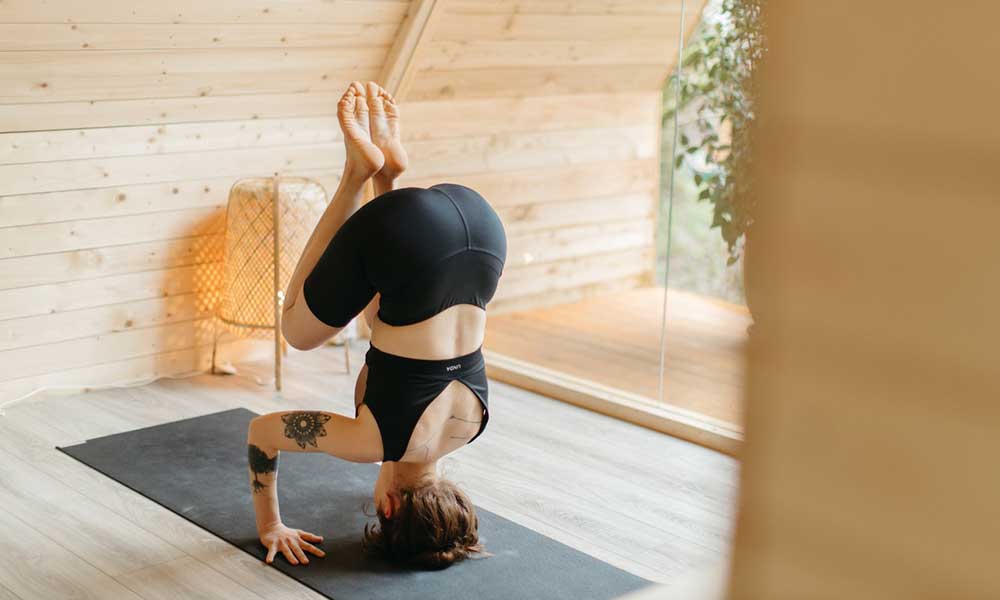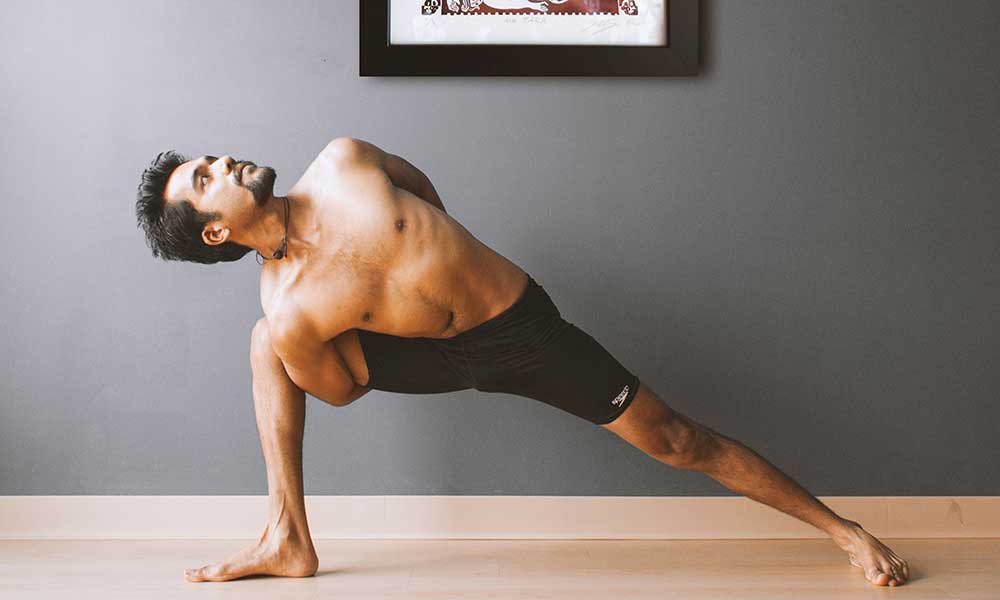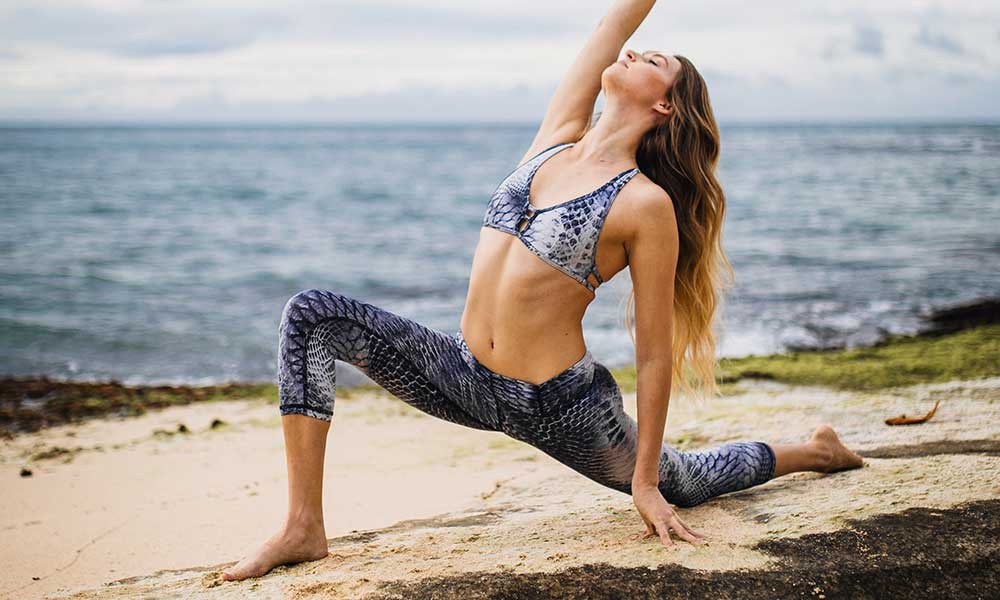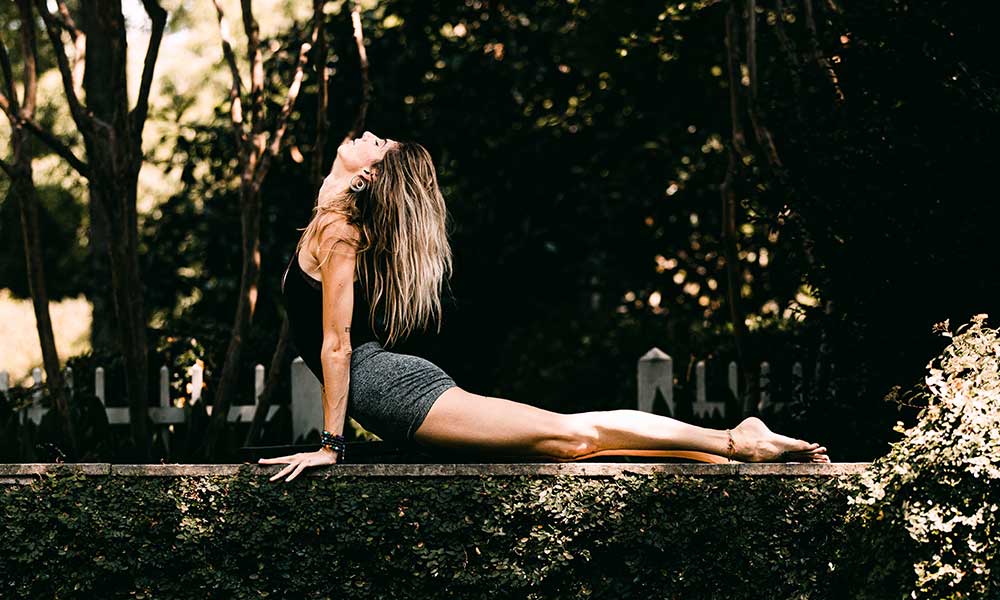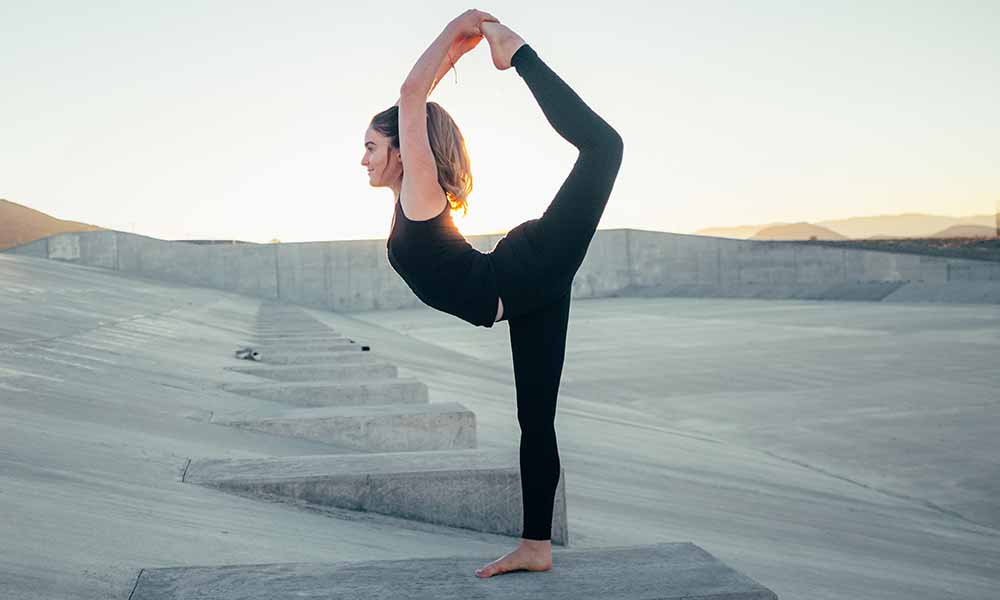Ever since its arrival to the United States, yoga has branched out into many different styles and adaptations of the traditional practice.
Rocket Yoga is one of these popular adaptations.
It was designed to make the classical Ashtanga Yoga practice more accessible to anyone who felt like the traditional route was too challenging.
Ashtanga Yoga is a highly structured, traditional yoga practice with a total of five asana series.
In order to move on from one series of Ashtanga to the next, you must first master every pose in the first series and so on.
Rocket Yoga breaks down the rigid structure of Ashtanga Yoga to make it simpler for you to practice.
Keep reading to learn more about Rocket Yoga.
What is Rocket Yoga?
Rocket Yoga is a modified version of traditional Ashtanga Yoga that was created by a man named Larry Shultz.
Shultz was a student of yoga expert K Pattabhi Jois for nine years in Mysore before developing Rocket Yoga in San Francisco in the 1980s.
Shultz designed this practice in an effort to make Ashtanga Yoga more digestible to westerners who were interested in trying yoga.
Popular amongst celebrities, the practice would eventually get its name from band member Bob Weir of ‘The Grateful Dead,’ who described it as fast and easy, like the takeoff of a rocket.
He wasn’t wrong.
Rocket yoga is a fast-paced style of yoga equipped with a dynamic flow of Ashtanga Yoga poses: standing poses, seated poses, twists, and bends.
In Rocket Yoga, students have the power to modify the poses as they see fit.
If they get stuck with a pose, they can make the choice to either skip it, or find an easier way to do it rather than sticking to a highly structured pattern.
Due to its flexibility and variety, Rocket Yoga is a viable alternative for those who want to experience something similar to Ashtanga but perhaps have physical limitations.
This style of yoga gives you all the breathing and movement without the extra pressure.
It’s physically demanding, but also helps you to clear your mind and be in the present moment.
The major difference between Rocket Yoga and Ashtanga Yoga is that you can decide which asanas to do and how to practice them without following a linear configuration.
The three categories of Rocket Yoga
In Ashtanga Yoga, there are five series.
Rocket Yoga plays off of these series in its own unique way and is broken up into three categories: Rocket I, Rocket II, and Rocket III:
- Rocket I: This category is very much like the primary series of Ashtanga Yoga, focusing on hip openers, forward bends, and strengthening your core. In Rocket I, students will also be introduced to Rocket special arm balances as well as inversion postures.
- Rocket II: In this category of Rocket Yoga, students will focus mostly on backbend techniques and spinal twists of seated postures. This is a modified version of Ashtanga Yoga’s second series.
- Rocket III: In the final category of Rocket Yoga, the poses of Rocket I and Rocket II are meshed to give you a practice that consists of twists, folds, and balances to help you become stronger and more flexible.
Rocket Yoga poses
The heart of Rocket Yoga is made up of arm balances, inversions such as handstands, headstands and forearm stands.
As intimidating as they might sound, you can always use a wall for support or ask your instructor for help if you find yourself in a struggle.
Here are the poses you can expect to get into in a Rocket Yoga class:
- Astavakrasana (Eight Angle Pose): An advanced level asana, this pose got its name after a sage called Ashtavakra, who was said to be cursed and born crooked in eight different places. It is recommened that you practice this pose first thing in the morning on an empty stomach. Doing so strengthens the muscles in your wrists, arms, and shoulders while also toning your inner thighs and abs. It enhances your balancing skills and aids the elimination of toxins from the body. Shoot for holding the pose for 60 seconds.
- Bakasana (Crane Pose): When in this pose, your body should look similar to the stance of a crane. An intermediate level asana, this posture will boost your physical and mental strength while also stretching out the muscles in your upper back. Practice this pose on an empty stomach to cleanse the bowels. Try to hold this pose for 30 to 60 seconds.
- Vrischikasana (Scorpion Pose): When done properly, this pose should look like the stance of a scorpion. An advanced level pose, it is known to reduce aging, improve blood flow, strengthen your arms, and alleviate tightness in the back. Hold this pose for as long as you can.
- Mayurasana (Peacock Pose): This asana resembles a peacock walking around with its feathers down. An intermediate level pose, it is believed to cure constipation and prevent diabetes. Practicing peacock pose will strengthen your head, lungs and neck while detoxifying the body, calming the mind, and improving your ability to focus.
- Salamba Sirsasana (Headstand): This pose is a total inversion of the body, otherwise known as the king of all asanas. An advanced asana, it is known to lower stress levels and symptoms of mild depression. It stimulates your pituitary and pineal glands and is therapeutic for asthma, sinusitis, and insomnia. If you can master this pose, try to hold it for as long as 1 to 5 minutes.
Benefits of Rocket Yoga
Yoga itself is a multifaceted exercise that boasts a variety of health benefits, but here are some of the key benefits of practicing Rocket Yoga:
- It stimulates your nervous system.
- It grants you autonomy, change and freedom in comparison to traditional Ashtanga.
- It improves your balance and flexibility.
- It helps you build physical strength.
- Increases your consciousness and ability to be mindful.
- It helps to cleanse and purify the body of toxins.
Frequently Asked Questions (FAQs)
Here are some of the most common questions people have about Rocket Yoga.
Is Rocket Yoga difficult?
While Rocket Yoga is a fast-paced and physically demanding exercise, it was designed to be an easier and more accessible version of Ashtanga Yoga.
What is the Rocket Yoga sequence?
Rocket Yoga is a less rigid form of Ashtanga Yoga that is categorized into three different categories:
- Rocket I focuses on hip openers, core work, and forward bends.
- Rocket II focuses on backbends and seated twists.
- Rocket III combines the poses from Rocket I and Rocket II to help you build strength and flexibility.
Why is rocket yoga called Rocket?
The name “Rocket Yoga” was coined after the band member Bob Weir of ‘The Grateful Dead’ described the practice as being fast and easy like the launching of a rocket.
Who created Rocket Yoga?
A man named Larry Shultz created Rocket Yoga in San Francisco in the 1980s.

